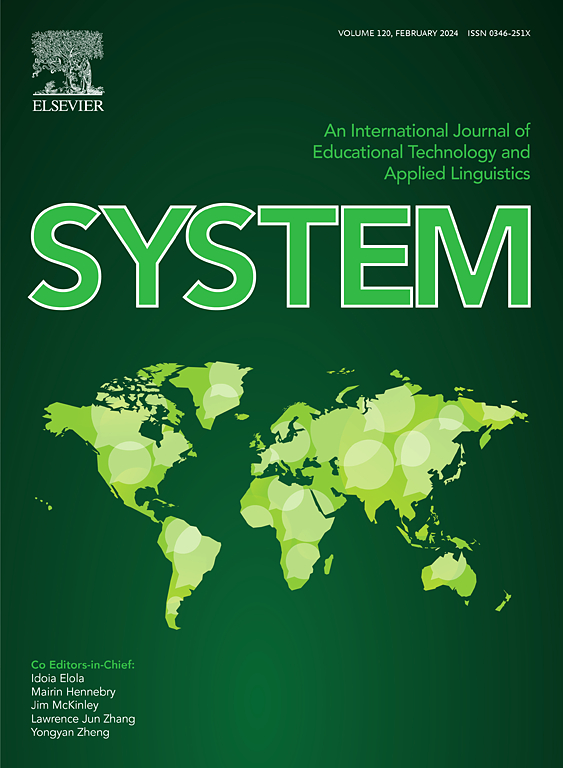认知-情感关系:任务排序如何重塑发音学习轨迹
IF 5.6
1区 文学
Q1 EDUCATION & EDUCATIONAL RESEARCH
引用次数: 0
摘要
本研究探讨了发音任务的顺序如何影响学习者的认知参与和情感反应,重点关注注意力、情感和语音发展之间尚未被探索的交集。我们以中级二语学习者为样本(N = 60),比较了三组学习者在按教学顺序或随机顺序安排的分段、超分段和连接语音任务中的表现。收集了声学、感知和自我报告数据,以检查语音增益、注意力模式和情绪变化。研究结果表明,结构化任务排序显著提高了分段准确性和韵律流畅性,同时也减少了焦虑,提高了学习者的参与度。相比之下,随机任务呈现导致较弱的收益和较高的情绪变异性。这些结果支持了语音教学受益于系统任务进展的观点,特别是当情感和认知需求一致时。我们提出了一个基于任务的语音教学认知-情感模型,强调加工需求和学习者情绪之间的动态相互作用。该框架通过将情感变量作为核心因素而不是外围影响因素,扩展了现有的第二语言任务设计理论。该研究对语音教学法的研究具有经验和概念上的贡献,对课程设计和任务型语言教学具有更广泛的启示。本文章由计算机程序翻译,如有差异,请以英文原文为准。
The cognitive-affective nexus: How task sequencing reshapes pronunciation learning trajectories
This study investigates how the sequencing of pronunciation tasks influences learners’ cognitive engagement and affective responses, focusing on the underexplored intersection between attention, emotion, and phonological development. Drawing on a sample of intermediate L2 English learners (N = 60), we compared performance across three groups exposed to segmental, suprasegmental, and connected speech tasks arranged in either pedagogically-sequenced or random order. Acoustic, perceptual, and self-report data were collected to examine pronunciation gains, attentional patterns, and emotional shifts over time. Findings reveal that structured task sequencing significantly enhances segmental accuracy and prosodic fluency, while also reducing anxiety and increasing learner engagement. In contrast, random task presentation led to weaker gains and heightened emotional variability. These results support the view that pronunciation instruction benefits from systematic task progression, particularly when emotional and cognitive demands are aligned. We propose a cognitive-affective model of task-based pronunciation instruction, emphasizing the dynamic interplay between processing demands and learner emotion. This framework extends existing theories of second language task design by integrating affective variables as core components, rather than peripheral influences. The study contributes both empirically and conceptually to research on pronunciation pedagogy, with implications for curriculum design and task-based language teaching more broadly.
求助全文
通过发布文献求助,成功后即可免费获取论文全文。
去求助
来源期刊

System
Multiple-
CiteScore
8.80
自引率
8.30%
发文量
202
审稿时长
64 days
期刊介绍:
This international journal is devoted to the applications of educational technology and applied linguistics to problems of foreign language teaching and learning. Attention is paid to all languages and to problems associated with the study and teaching of English as a second or foreign language. The journal serves as a vehicle of expression for colleagues in developing countries. System prefers its contributors to provide articles which have a sound theoretical base with a visible practical application which can be generalized. The review section may take up works of a more theoretical nature to broaden the background.
 求助内容:
求助内容: 应助结果提醒方式:
应助结果提醒方式:


